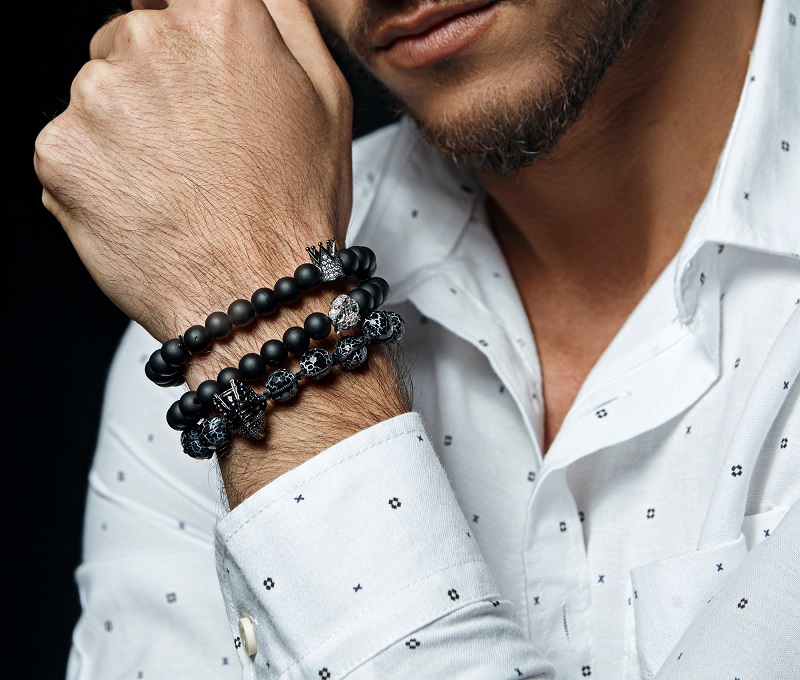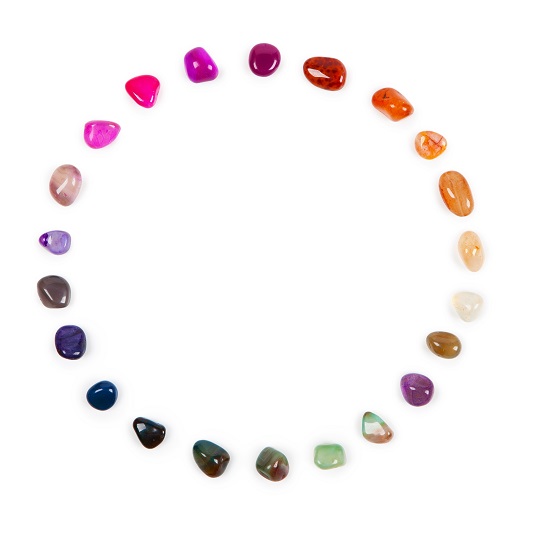Gemstone of the Week: Zircon

Gemstone of the Week: Spinel
3rd November 2017
Find out the gestome of the week: Peridot
17th November 2017Closer to resembling Diamond than any other gem, Zircon boasts an intense lustre and strong sparkle. However, the strong resemblance the stone bears to Diamond isn’t always seen as a positive; sometimes, Zircon is perceived as an inexpensive imitation – for some people, this makes the stone unfavourable. Aside from this limited opinion, Zircon is a desirable gem admired for its brilliant shine and diverse range of colours. In this article, we explore the gemstone in more detail, discussing a range of topics varying from how to identity Zircon to the healing properties it boasts.
How to Identify Zircon
While Zircon has a similar appearance to that of Diamond, that is where the similarities stop. If you study the stones in more detail, there are some considerable differences between the two. The gemological properties of Zircon bear the usual trait of exhibiting wide ranges; for instance, while most specimens of the same gemstone are equal in hardness, the hardness ratings of Zircon can range anywhere from 6.5 to 7.5 on the Mohs scale. Another attribute that can be used to identify the stone is its notable birefringence. This property can be described simply as the appearance of doubled facet edges. Additionally, Zircon has a high refractive index and a varied density, typically falling between 3.93 and 4.73.
Even for the untrained eye, distinguishing between Zircon and Diamond isn’t difficult if you know what to look for. Zircon is typically brittle, causing it edges to chip over time; because of this, Zircon gemstone jewellery should be worn with care to prevent damage. Unlike an expensive Diamond ring, a ring containing Zircon should ideally have a protective setting. As the delicate stone is prone to cracking, extra care must also be taken when faceting the stone. Additionally, it is important to cut the stone along proper angles when faceting it to minimise the appearance of it double refraction. If the correct care is not taken, the finished stone can appear blurry and be almost unsellable.
Different Varieties of Zircon
Zircon is found in a wide variety of colours, the most popular of which being blue. Although white or colourless stones are common, specimens of this nature are less sought after and therefore hold less value. Blue Zircon can appear in a variety of shades, ranging from sapphire blue to deep teal. Interestingly, the colour of blue Zircon is rarely natural. The deep blue hue is often produced by heating less desirable brown Zircon. Although brown Zircon is readily available, not every specimen has the right chemical makeup to turn blue with heat; typically, only stones mined from South East Asia boast this benefit. It’s not uncommon for the colour and lustre of Zircon to dull when exposed to intense sunlight. Although this is annoying, the effect can be easily reversed by performing a second round of heat treatment.
Varieties of Zircon are often used in crystal healing. Within this setting, each colour of the stone is thought to stimulate a different chakra. Below we explore the benefits of each colour.
Brown Zircon
is believed to open the earth chakra. This makes the stone ideal for centring and grounding.
Green Zircon
stimulates the heart chakra. This property makes the stone great for attracting abundance.
Orange Zircon
stimulating the sacral chakra, Orange specimens are thought to promote creativity. The stone is also thought to prevent injury, increase beauty, and guard its owner against jealousy.
Red Zircon
activates the base chakra. With this in mind, the stone is thought to aid the body in times of stress by providing vitality.
Yellow Zircon
Cleansing the solar plexus chakra, yellow Zircon is ideal for those suffering from depression. Additionally, this variety is thought to attract success in romantic relationships and increase libido.
Where is Zircon Found?
The oldest pieces of Zircon are believed to be around 4 billion years old. This impressive age not only makes them older than the moon but also makes them the oldest mineral on Earth. Throughout history, Sri Lanka has provided great quantities of desirable green Zircon. Gems of this nature are also found in Burma and Cambodia, too. Burma is one of the best-known sources for all colours of Zircon, though the oldest deposits are thought to have come from Australia. Today, Zircon is found in a variety of locations including Brazil, Madagascar, Nigeria, Korea and Thailand.
Healing Properties of Zircon
Many years ago, Zircon was believed to protect against robbery, injury, and disease. Some individuals carried specimens of the stone whilst travelling, with the hope that the gem would protect them against thieves.
As mentioned previously, each colour of Zircon is thought to benefit a different chakra. As a whole, though, the gemstone is believed to promote unconditional love for yourself, others, and the world around you. When used spiritually, Zircon helps you to recognise the purpose of life. The stone assists clear thinking, helping individuals to realise what is truly important in life. Overcoming prejudice, the stone helps you to love everybody equally, clearing your subconscious of discriminative thoughts.
Zircon also boasts a range of physical benefits including relief from muscle cramp and sciatica. Additionally, the stone is thought to be great for those suffering from depression and insomnia, cleansing the solar plexus chakra to encourage self-love.
In Summary
Maybe you are interested in Zircon for its Diamond-like appearance, hoping to pick up a beaded bracelet to add to your jewellery collection; or you’re suffering from muscle pain and are seeking the relief of gemstone healing. Whatever your plan is, get your hands on a good-quality piece of Zircon to reap the physical and emotional benefits.




